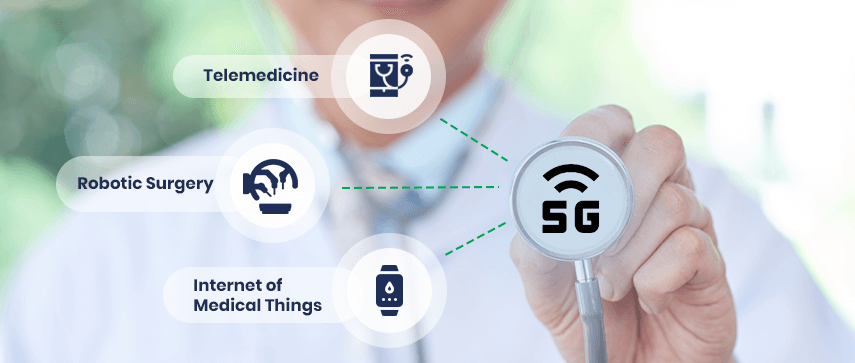Healthcare has witnessed a remarkable transformation fueled by technological advancements in recent years. One of the most promising developments is the integration of telemedicine and 5G technology, which has the potential to revolutionise the way healthcare services are delivered and accessed. This essay delves into the extensive benefits of this integration, exploring how it enhances accessibility, improves patient care through remote monitoring, streamlines emergency services, fosters collaboration, and optimises resource allocation. The combined power of telemedicine and 5G can reshape healthcare, making it more efficient, effective, and inclusive.
Telemedicine has already made significant strides in expanding access to healthcare, particularly for individuals in remote or underserved areas. However, the integration of 5G technology takes accessibility to new heights. With its lightning-fast network speeds and low latency, 5G enables seamless transmission of large medical files, high-definition video consultations, and real-time patient monitoring. This eradicates geographical barriers and ensures that patients receive timely medical attention regardless of location. By leveraging 5G’s capabilities, telemedicine can bridge the healthcare divide, reducing disparities and ensuring equitable access to care for all.
Remote patient monitoring (RPM) is an essential component of telemedicine that allows healthcare providers to monitor patients’ vital signs and health metrics from a distance. The integration of 5G technology in RPM revolutionises the process, enabling real-time data transmission from connected devices and wearables. With the ability to capture and transmit vital signs such as heart rate, blood pressure, glucose levels, and more, healthcare professionals can closely monitor patients’ conditions, detect anomalies early, and intervene promptly. This continuous monitoring prevents potential complications and empowers patients to actively participate in their own care actively, leading to better management of chronic conditions and improve overall health outcomes.
During medical emergencies, every second counts, and access to specialised care can be critical. The combination of telemedicine and 5G technology enables healthcare providers to evaluate emergency situations in real time remotely, providing immediate medical guidance to first responders or individuals on-site. With the high speeds and low latency of 5G, medical professionals can collaborate seamlessly, offering accurate assessments and facilitating swift decision-making. This rapid exchange of information ensures that appropriate treatment is initiated promptly, potentially saving lives in critical situations. By enabling efficient emergency care, telemedicine supported by 5G enhances the overall effectiveness of emergency response systems.
Telemedicine supported by 5G facilitates collaboration and consultation among healthcare professionals, transcending geographical boundaries. Through real-time video conferences and secure data sharing, doctors, specialists, and other medical experts can connect, discuss patient cases, share expertise, and seek second opinions. This interdisciplinary collaboration enhances the quality of care by incorporating diverse perspectives, leading to more accurate diagnoses, personalised treatment plans, and improved patient outcomes. Furthermore, telemedicine enables medical professionals to participate in remote conferences, workshops, and training sessions, fostering continuous learning and professional development without travelling. This knowledge exchange and expertise contributes to a more skilled and well-informed healthcare workforce.
Telemedicine integrated with 5G technology offers significant cost-saving opportunities and optimises the allocation of healthcare resources. By reducing the need for in-person visits, telemedicine lowers patient transportation costs and alleviates the burden on healthcare facilities. Additionally, medical professionals can manage their time more efficiently, potentially increasing the number of patients they can attend to. Remote consultations and monitoring help prevent unnecessary hospital admissions and emergency room visits, optimising resource utilisation and reducing healthcare expenditures. Integrating telemedicine and 5G technology allows healthcare organisations to allocate resources more effectively, ensuring they are available where they are most needed.
Integrating telemedicine and 5G technology has immense potential to revolutionise healthcare delivery and access. By enhancing accessibility, improving remote patient monitoring, streamlining emergency care, fostering collaboration, and optimising resource allocation, this powerful combination paves the way for a more efficient, effective, and inclusive healthcare system. As we embrace the transformative potential of telemedicine and 5G, it is essential to prioritise their integration, address challenges related to infrastructure and connectivity, and ensure equitable access to these technologies. By doing so, we can unlock the full benefits of telemedicine and 5G and create a healthcare ecosystem that leverages technology to improve patient outcomes, reduce healthcare disparities, and build a healthier future for all.



